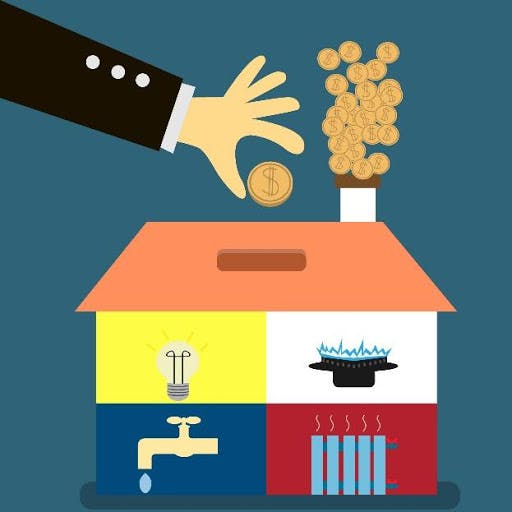If you’re like me, you get annoyed when the cable, internet and electric bills hit your inbox or mailbox. Bills seem to only go up from month to month.
The average household spends more than $2,200 a year on energy bills, with nearly half of this going to heating and cooling expenses. With the cost of living inching higher, we all need to figure out how to reduce the bills that we can control. Here are 10 ways to consider saving on utilities, with some applying only to homeowners.
- Buy a programmable thermostat. We’ve covered smart-home technology on the blog. After purchasing a voice assistant, the next natural step for most consumers is to add a smart thermostat. The savings in home electric bills come when you program the thermostat to turn on and off at a certain temperature or time of day. The Energy Department says lowering or raising the home’s temperature by 7-10 degrees (depending on winter or summer) for eight hours as you sleep can reduce your bill 10% a year.
- Scrutinize your internet service. I just received an internet boost from my provider. Now while that sounds great (you know, the need for speed!), it came with an unwanted price increase. Check the bill and speak with your provider to see what options are available for internet speed. Fastest is not always necessary. Always consider bundling internet with other services such as cable-TV and home-security service. My provider, for example, offers the fastest internet service for $125 a month when sold separately. It’s more like $50 a month when bundled with other services.
- Adjust your water heater temperature setting. Most heaters come with a factory setting of 140 degrees Fahrenheit. That’s hot! Consider turning it down to 120 degrees and save about $60 a year.
- Check for air drafts from your windows and doors. Use a candle or incense stick around your shut doors and windows to see how the smoke travels – or if it burns out. Sealing your home could cut a $1,000 heating and cooling bill by about 20%.
- Go tankless. Say what?! Tankless water heaters are one of the latest long-term savers in a home. Why so popular? By producing hot water when needed, tankless heaters are up to 30% more efficient than traditional, always-on water heaters. Typical annual savings: About $150.
- Be more disciplined when watering outdoors. Many homeowners take pride in producing a green lawn, blooming flowers and a crop of fresh produce – of which all require a lot of water. But don’t drench the lawn or flower beds. Most areas need just 1-2 inches of water a week (including contributions from Mother Nature). Sprinkler systems typically overwater the grounds.
- Maintain your HVAC system. As we discussed before, it’s important for many reasons to carefully watch your heating and air conditioning systems. Simply changing the air filter every 6-12 months will save you money. Routine maintenance will help keep your heating and cooling systems working efficiently and safely year-round.
- Clean your dryer filter. A dryer can lose 75% of its efficiency if its trap gets clogged. Clean the filter every use and save about $100 a year on the cost of efficiently operating your dryer.
- Switch your light bulbs. The use of light-emitting diode (LED) bulbs is common-sense, smart and an easy change to make around the house. Switching 20 or so LED bulbs can save about $1,000 over their 10-year life span.
- Pay your bills online. Be sure to pay your bills online to save on postage and paper costs – a potential savings of about $30 a year.
For more information, check out these tips and tricks (opens as PDF) for saving at home. And learn more from Seattle City Light on ways to save money and other energy-saving suggestions.




